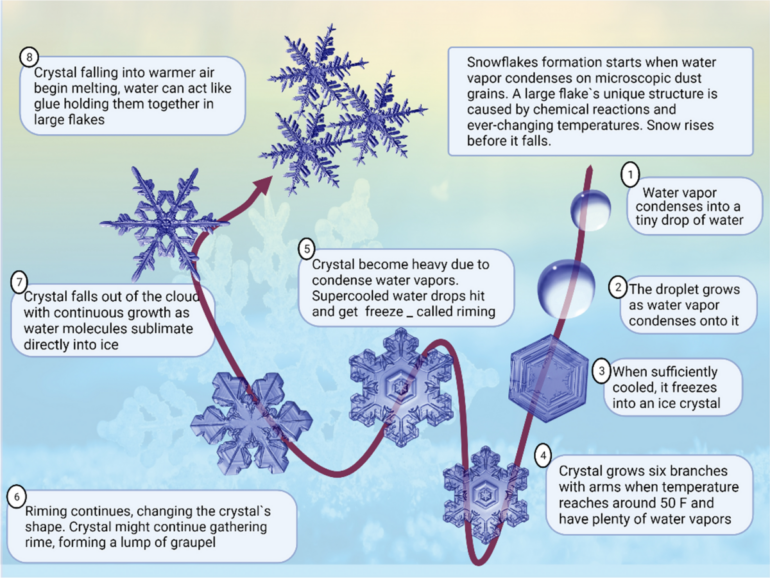In a new study assessing how climate change might alter hydropower generation across the continental United States, researchers show that except for some parts of the Southwest, hydropower generation is expected to rise in the future.
The analysis also shows that in the Pacific Northwest in the future, less water will be stored in the mountains as snowpack in the winter as warmer temperatures bring more rain. This seasonal shift will challenge water managers and grid operators to rebalance how and when to use dams to produce electricity.
“We know the climate is changing and we know that’ll affect how much water will be available to produce hydropower,” said Daniel Broman, a hydro-climatologist at the Department of Energy’s Pacific Northwest National Laboratory and lead author on the new paper. “Our research provides a consistent look across the country, so even if water and energy planners are only looking ahead regionally, our data can provide a broader outlook.”
The new study was published on August 8 in Environmental Research Letters.
How climate change affects hydropower
Water flows through 2,250 hydropower facilities across the United States, contributing 6% of the country’s electricity. Hydropower dominates in the Pacific Northwest, providing 60% of energy in the region.
Dam operations don’t just consider power, they also consider flood control, transportation routes and water for irrigation and support fisheries and natural ecosystems. So, understanding how water availability will change in the future is important for water managers when planning for their various resource needs.
To support this planning, DOE periodically releases a report known as the 9505 Assessment (referring to Section 9505 of the SECURE Water Act). The report provides a detailed assessment of climate change’s effects on hydropower facilities. The third of these reports was delivered to Congress in December of 2023.
But that report only includes 132 facilities, all federally owned. The power they generate makes up 46% of the nation’s hydropower capacity, said study co-author Nathalie Voisin, chief scientist for water-energy dynamics at PNNL and a lead researcher on the project. To better understand how climate change may affect hydropower generation across the entire continental United States, the researchers added streamflow and hydropower generation data from an additional 1,412 non-federal facilities.
The researchers teamed up with colleagues at DOE’s Oak Ridge National Laboratory, who have developed models that show how climate change might alter the timing and volume of water flow in streams and rivers over the next few decades. The PNNL team then ran that water flow data through models that captured the multiple uses of water and calculated hydropower generation for two time periods: a near-term period spanning 2020–2039 and a midterm period spanning 2040–2059.
The team found that hydropower production generally increases about 5% in the near term and 10% in the midterm across the continental United States. This could be because climate models generally show an increase in precipitation as Earth warms.
Only one part of the country saw an average decrease in hydropower generation: in some parts of the Southwest, which is already facing drought, the models project a slight decrease in hydropower production between 3–6% in the near term.
Broman stressed that because the future of climate change is uncertain, the range of possible outcomes for hydropower generation is large. For example, between 2020–2039, hydropower generation could change between –5–21% while in later years it could change –4–28%.
Seasonal changes could also have big implications for how water is managed across the country, Broman said.
Hydropower changes by season
In the winter, the team found that hydropower generation may rise 12% in the near term and 18% in the midterm across the United States. Similarly, increased rainfall during the fall may lead to a near-term 5–20% rise in hydropower production in the Southeast, as well as smaller increases in the Northeast and Midwest.
But some of the biggest hydropower generation changes may occur in the summer, especially in the West. In the summer, hydropower generation may decrease 1–5% in the western region of the country, while higher precipitation may increase hydropower generation in the eastern areas by 1–5%, both in the near-term.
Historically, mountain snowpack in the West has stored water until the late spring and summer. When the snow melts, that water generates more electricity. Now, due to increased temperatures, less snow accumulates on mountains and melts earlier in the year. The early snowmelt and shift toward rain in the winter means hydropower generates more electricity during the winter and less in the following spring and summer.
“Snow is storage. If the snow melts earlier, it changes the timing and volume of water availability,” Voisin said. “And because temperatures are rising overall, the hydropower availability and energy demand might not be in sync.”
The future of hydropower
Voisin stressed that even if hydropower generation declines in certain seasons, it still offers a reliable source of energy for the power grid. Like a coal or gas plant, hydropower can be dispatched as needed and provide stability to the grid as a whole—highlighting its flexibility as a renewable energy source.
Broman and Voisin hope that power system operators and water managers can use the new consistent multiscale assessment and the accompanying data to inform water-energy tradeoffs discussions, such as hydropower flexibility needs amid other societal benefits of water uses.
With climate change bringing an uncertain future, historical records don’t necessarily reflect what the next few decades may bring, Broman said. What’s more, “utilities may be thinking about hydropower generation under climate change for their own region, but the electricity grid is bigger than that.”
More information:
Daniel Broman et al, Multi-scale impacts of climate change on hydropower for long-term water-energy planning in the contiguous United States, Environmental Research Letters (2024). DOI: 10.1088/1748-9326/ad6ceb. iopscience.iop.org/article/10. … 088/1748-9326/ad6ceb
Provided by
Pacific Northwest National Laboratory
Citation:
Hydropower generation projected to rise, but climate change brings uncertain future (2024, August 21)



